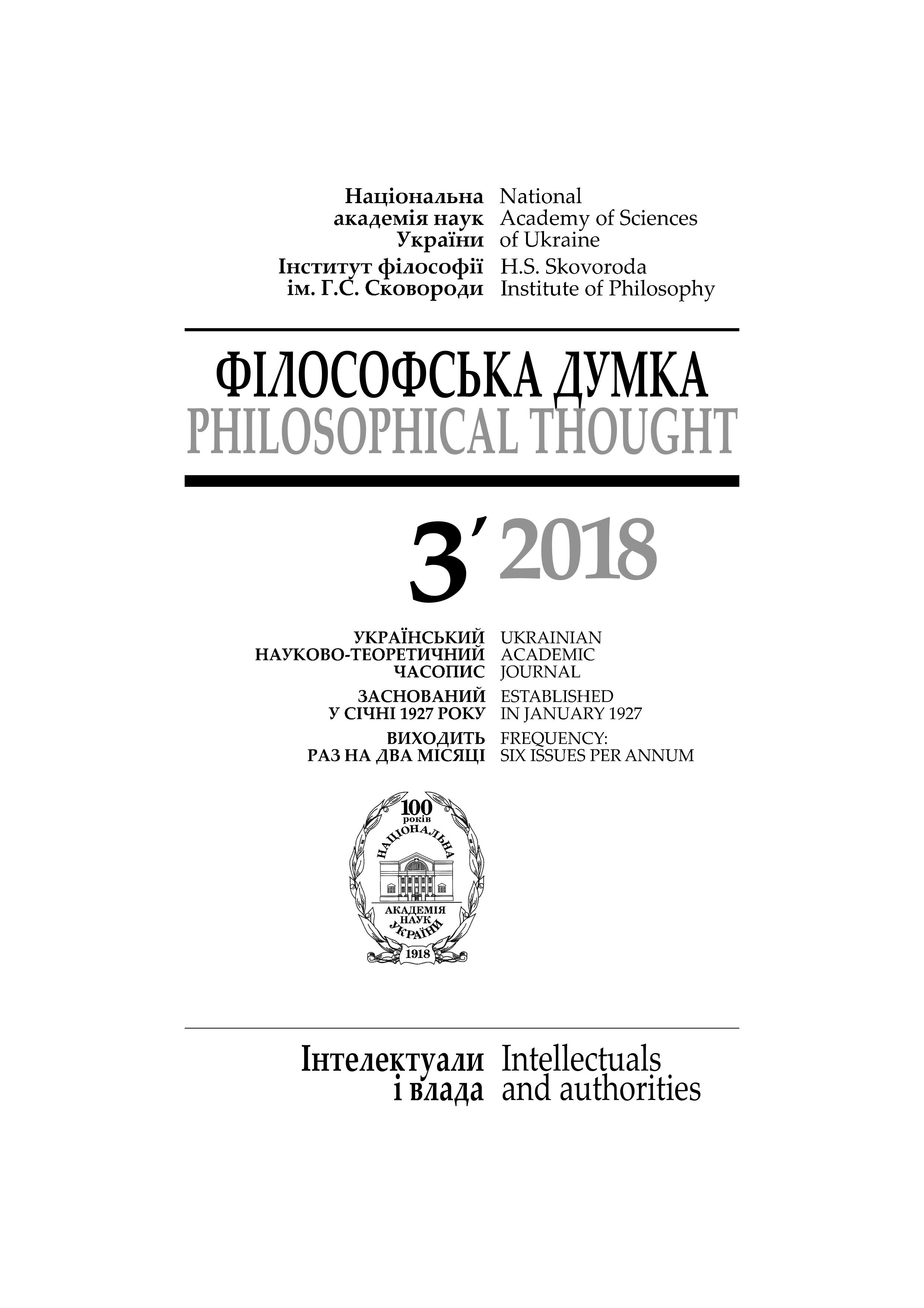Two types of moral decision-making
SOCIAL PHILOSOPHY
Keywords:
moral decision, moral intuition, moral reasoning, dual-system approach, dual- process theory of moral judgementAbstract
This paper analyzes and classifies the main kinds of moral decisions. The classification is based on two types of moral decisions corresponding to the two types of cognitive processes described by D. Kahneman (System 1 and System 2). Sharing critical remarks of J. St. B. T. Evans and K. Stanovich concerning the terms «System 1» and «System 2», we suggest two types of moral decision-making processes (their result, in turn, are moral decisions of the first and second types). The first (intuitive) type includes moral decisions which are automatic, fast, accepted with little or no effort and voluntary control. The second type includes moral deci- sions preceded by the deliberate reasoning. The main kinds of moral decisions of the first type are as follows: 1) intuitively emotional decisions (i.e. the decisions made under the influence of emotions that accompany moral decision-making process such as empathy, shame, trust, concern, disgust, etc.); 2) intuitively normative decisions (decisions, made under the influence of learned to automaticity sociocultural norms); 3) the decisions made under the influence of moral risky psychological inclinations — unconscious human ten- dencies (cognitive biases, social heuristics, etc.) that make us think in a certain way and make decisions which are sometimes unacceptable from the logical and ethical point of view. Moral decisions of the first type are ready-made decisions that have been formed in the process of biosociocultural evolution or individual human experience. Perceiving envi- ronmental signals, the human mind unconsciously correlates them with ready-made an- swers and, finding a match, it automatically and quickly offers a ready-made decision. Kinds of moral decisions of the second type are: 1) rationalized moral decisions where ra- tionalization is defined as reasoning occurring after intuitive reaction that explains, justifies and clarifies it before the final decision; 2) rational moral decisions, i.e. the decisions based on a consciously chosen ethical rule, principle or norm.
References
Nadurak, V. (2016). Emotions and Considerations in Taking Moral Decisions. [In Ukrainian]. Antropologichni vymiry filosofskykh doslidzhen, 10, pp. 24-32. [ = Надурак 2016]
Nadurak, V. (2017). Critical Analysis of Reliability of Intuitive Moral Decisions [In Ukrainian]. Antropologichni vymiry filosofskykh doslidzhen, 11, pp. 7-15. [ = Надурак 2017]
Bartels, D.M., Bauman, C.W., Cushman, F.A., Pizarro, D,A., McGraw, A.P. (2015). Moral Judgment and Decision Making. In: The Wiley Blackwell Handbook of Judgment and De- cision Making (pp. 479-516). Chichester, West Sussex: Wiley-Blackwell.
Borry, P., Schotsmans, P., Dierickx, K. (2004). Editorial. Empirical ethics: A challenge to bio- ethics. In: Medicine, Health Care and Philosophy, 7 (1), 1-3.
Evans,J.St.B.T.,Stanovich,K.E.(2013).Dual-ProcessTheoriesofHigherCognition:Advancing the Debate. In: Perspectives on Psychological Science, 8 (3), 223-241.
Gigerenzer, G. (2008). Moral Intuition = Fast and Frugal Heuristics? In: Moral Psychology. Vol. 2: The Cognitive Science of Morality: Intuition and Diversity (pp. 1-26). S.l.: MIT Press.
Gigerenzer, G. (2008). Reply to Comments. In:Moral Psychology, Vol. 2: The Cognitive Science of Morality: Intuition and Diversity (pp. 41-66). S.l.: MIT Press.
Greene, J.D. (2014). Beyond Point-and-Shoot Morality: Why Cognitive (Neuro) Science Mat- ters for Ethics. In: Ethics,24 (4), 695-726.
G r ay, B., Baron, J. (2017). Challenges for the sequential two-system model of moral judge- ment. In: Thinking & Reasoning, 23 (1). DOI: http://dx.doi.org/10.1080/13546783.2016.1 216011.
Haidt, J. (2001). The emotional dog and its rational tail: A social intuitionist approach to moral judgment. In: Psychological Review, 108 (4), 814-834.
Haidt, J., Kesebir, S. (2010). Morality. In: Handbook of Social Psychology (vol. 2, pp. 797-832). Hoboken, New Jersey: Wiley.
Helion, C., Pizarro, D.A. (2015). Beyond dual-processes: The interplay of reason and emotion in moral judgment. In: Springer Handbook for Neuroethics (pp. 109-125). S.l.: Springer Netherlands.
Kahneman, D. (2003). A perspective on judgment and choice: mapping bounded rationality. In: American Psychologist, 58 (9), 697-720.
Kahnemanб D. (2011). Thinking, Fast and Slow. New York: Farrar, Straus and Giroux. Mallon, R., Nichols, S. (2011). Dual Processes and Moral Rules. In: Emotion Review, 3 (3), 284–285.
Stanovich, K.E., West, R.F. (2000). Individual Differences in Reasoning: Implications for the Rationality Debate. In: Behavioral and Brain Sciences, 23 (5), 645– 665.
Tingh g, G., Andersson, D., Bonn, C., Johannesson, M., Kirchler, M., Koppel, L., V stfj ll, D. (2016). Intuition and Moral Decision-Making — The Effect of Time Pressure and Cognitive Load on Moral Judgment and Altruistic Behavior. In: PLoS ONE, 11 (10). DOI: http://doi. org/10.1371/journal.pone.0164012.
Downloads
-
PDF (Українська)
Downloads: 292
Published
How to Cite
Issue
Section
License
Authors who publish with this journal agree to the following terms:
- Authors retain copyright and grant the journal right of first publication.
- Authors are able to enter into separate, additional contractual arrangements for the non-exclusive distribution of the journal's published version of the work (e.g., post it to an institutional repository or publish it in a book), with an acknowledgement of its initial publication in this journal.
- Authors are permitted and encouraged to post their work online (e.g., in institutional repositories or on their website) prior to and during the submission process, as it can lead to productive exchanges, as well as earlier and greater citation of published work (See The Effect of Open Access).


